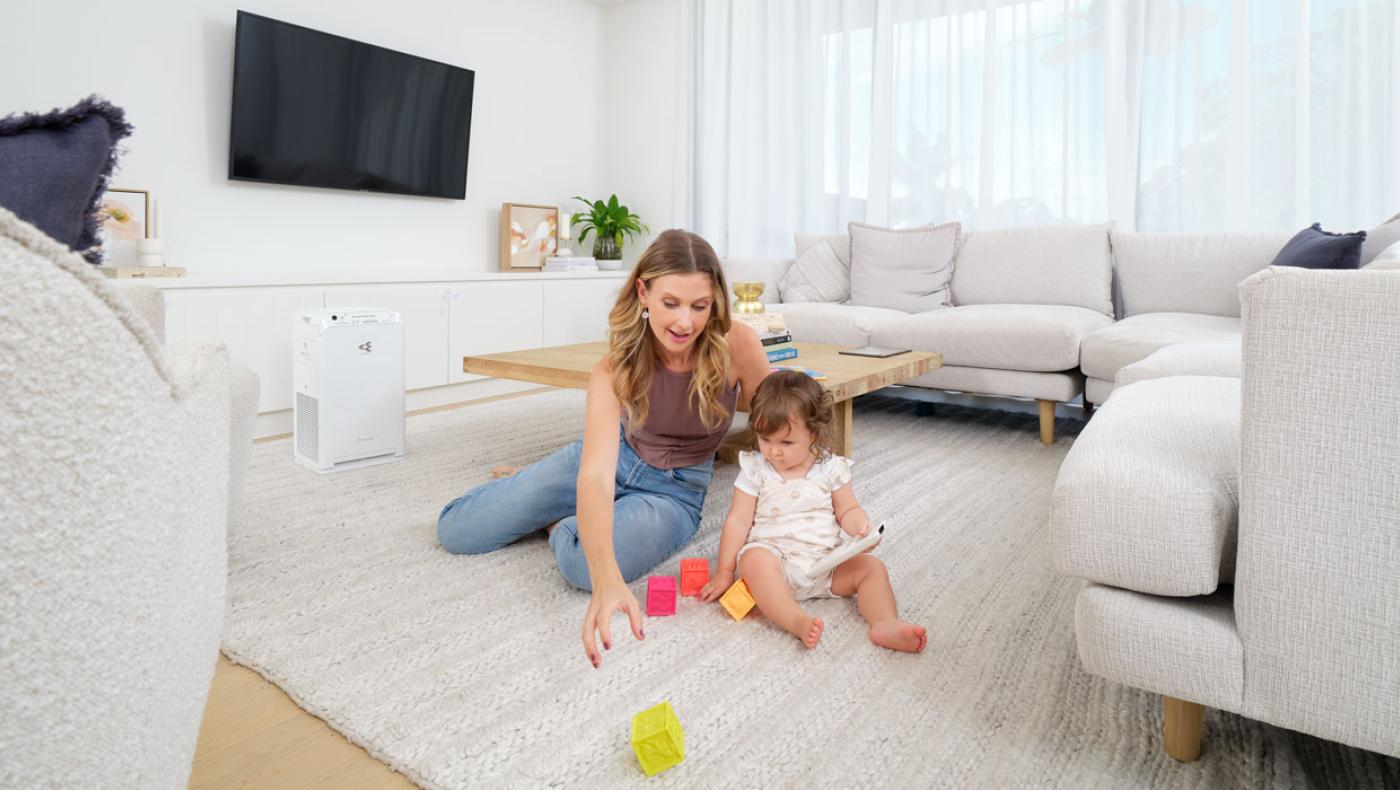The invisible danger in your home

Keeping your home safe is important for the health and wellbeing of everyone in your family. When you think about how to make sure your home is safe you probably think of home security systems, secure fencing around gardens and pool areas, effective pest control and keeping your home clean and well maintained. But one of the number one factors to consider is the air quality inside our homes. We spend as much as 90% of our lives indoors, so it makes sense that we should pay attention to the quality of the air we breathe indoors.
Alarmingly, indoor air quality can be much worse than outdoor air quality, due to a range of potential contributors such as indoor humidity, common pollutants and lack of air ventilation. Many pollutants can lurk inside the home, unseen and undetected, for you and your family to inhale. These can cause all sorts of health issues, from headaches and tiredness to more severe conditions like asthma, cancer and even kidney failure.
How Healthy is Your home?
The quality of the air inside a home varies greatly depending on the home, the inhabitants, the building materials, the furnishings, cleaning products used, appliance usage and where the home is located. At the most dangerous end of the scale, a ir pollutants such as asbestos and formaldehyde are present in the air . Even at the lower end of the scale, there are many ‘everyday’ pollutants that can have an impact, such as mould, mildew, traffic fumes, bacteria, dust mites, house paint, carpet fumes, cleaning products and disinfectants. Even household appliances can contribute to our indoor air quality – things like stoves, heaters and fireplaces, emit carbon monoxide and nitrogen dioxide without us even realising.
But don’t worry, the good news is, indoor air quality can be easily managed and improved effectively with just a few small changes.
Here are some simple steps to improve your home’s IAQ
No matter what home you live in, there are a few simple steps you can take to improve the air quality within your home;
- Eliminate dust by vacuuming regularly, mopping floors and dusting shelves and surfaces.
- Try to use alternatives to wood fires. These can cause the highest levels of pollutants in your indoor air causing damaging particles that are not good for you to breathe in.
- Use exhaust fans when cooking, and try to limit your use of gas cooking – boil your water before putting it on the stove to heat up. Little steps go a long way in minimising your cooking pollutants.
- Use natural cleaning products or ones with low VOCs. If you’re concerned about the products and appliances you’re using, programs like Sensitive Choice can provide more information on the safest options to use in your home.
All these small steps help, but by far one of the best ways to improve indoor air quality is to increase the ventilation and purification of the indoor air to ensure you have enough fresh, clean air and you are eliminating nasties. The best solution is to install a good quality air purifier or air conditioner that has air purifying technology.
State-of-the-art air purifying solutions
Daikin’s split system air conditioners come with some innovative and intuitive features that specifically target indoor air pollutants. They are made with industry leading air purifier technology that decompose bacteria and mould and actively remove carbon monoxide, formaldehyde and other allergens from your indoor air. They are also the only air conditioners approved by the National Asthma Council Australia’ Sensitive Choice Program
Some of the newer Daikin models that come with advanced air purifying technology are:
Cora, XL Series and Floor Standing models which include an advanced deodorising air purification filter called an enzyme blue deodorising filter that traps microscopic particles, decomposes odours and deactivates bacteria.
Daikin’s Zena and Alira X air conditioning systems incorporate Daikin’s signature Streamer Technology which decomposes bacteria and mould. This state of the art technology has proven to eradicate more than 99.6% of pollen in 2 hours, 99.9% of mould in 24 hours, 9.9% of viruses like Covid 19 in 30 minutes and 99.61% of allergens in 24 hours1 2 3.
The Alira X and XL Premium split-systems also have built-in humidity sensors that help boost the effectiveness of its Dry Mode operations, increasing its dehumidification capabilities.
Customised air quality solution for your home
To get a thorough understanding of the air quality in your home, you can book an air quality ‘health check’ with a qualified Daikin Specialist Dealer here. They’ll come to your home and assess it and suggest a tailored solution that’s right for you – helping you breathe easier on all fronts.
- Verified by Swiss multi-national testing and certification company, SGS with the following test condition: Daikin Air Purifier model MC55YPVM operating in a 30m³ chamber in Turbo mode (test number: SHES220801582571).
- Verified at Wakayama Medical University with the following test condition: Irradiated allergens with Streamer & checked decomposition of allergen proteins by either the ELISA method, electrophoresis, or electron microscopy (test number: CZ04B024).
- Verified at Japan Food Research Laboratories using antibacterial test/mould elimination test (test number: 204041635-001).
